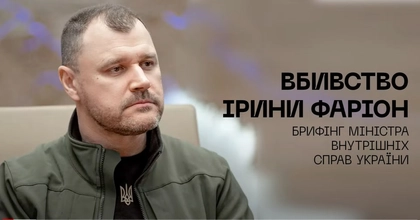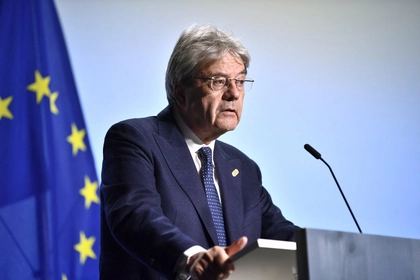Bonds: Debt refinancing improves in July
In July, the MoF increased UAH borrowings and the debt refinancing rate was up to 143% in 7M23. The refinancing level of FX-denominated debt slightly declined.
The MoF borrowed UAH30.7bn (US$840m) in local currency, which is more than the monthly borrowings during February‒June. Meanwhile, redemptions in July were among the lowest this year, just UAH12.8bn (US$350m). A huge difference between redemptions and new borrowings allowed the MoF to increase the refinancing rate to 143% in 7M23 or by 10pp compared with 1H23 results.
The MoF refinanced just 77% of USD-denominated redemptions in July, decreasing the refinancing rate to 106% in 7M23 or by 5pp compared with 1H23.
The refinancing rate in euros did not change in July, as there were no redemptions or borrowings in European currency.
JOIN US ON TELEGRAM
Follow our coverage of the war on the @Kyivpost_official.
ICU view: The refinancing rate remains above 100% and improved in July. As the NBU started the rate-cutting cycle (see comment below), the MoF will use any opportunity to decrease interest rates for UAH bonds. The prospect of a further reduction in the key policy rate will also incentivize investors to buy more UAH-denominated government bonds in the coming months to lock in high yields for longer. Therefore, the demand for local-currency securities may increase and shift to bonds with a longer maturity, thus allowing the MoF to maintain a high level of UAH debt refinancing in the coming months. To keep the FX-denominated debt refinancing above 100%, the Ministry of Finance may additionally offer USD-denominated bills during August to create a reserve for repayments scheduled for September‒December this year.

Farion’s Killer Prepared Disguises, Had Another Victim in His Sights, Interior Minister Says
Bonds: Eurobonds prices up again
Ukrainian Eurobonds prices rose last week, continuing the rally that started in the middle of the month.
Last week, USD-denominated Ukrainian Eurobond prices added an average 5%, moving to 30‒34 cents per dollar. The range of prices for instruments with different maturities tightened to 6.2% from 8.8%.
VRI prices rose by 8% last week to 49 cents per dollar of notional value, which is above their price prior to the russian full-scale invasion in February 2022.
ICU view: Last week's key economic news was that the NBU started the rate-cutting cycle (see comment below), giving a positive signal to the market that macro risks for Ukraine subsided significantly. This was also reflected in the updated NBU forecast, where the expectations improved for GDP growth (to 2.9% from 2% in the prior forecast), inflation (to 8.7% from 12.5% previously) and international reserves (from USD34.5bn to USD38.3bn). The positive messages from the NBU probably gave a new impetus for Eurobond prices.
FX: Speculative sentiment settles on FX market
Cash hryvnia weakened last week, but this weakening will likely be short-lived.
On the cash FX market, the hryvnia exchange rate weakened by 1.2% to UAH37.0‒37.8/US$ on average in systemically important banks. Households purchased more hard currency than they sold for the first time since the beginning of June.
On the interbank FX market, bank clients (legal entities) sold hard currency for US$94m less than they purchased, and the NBU reduced the weekly volume of its interventions by 41% to US$350m.
ICU view: In general, the situation in the FX market has not changed significantly. Households' interest in purchasing hard currency for three-month deposits has stayed nearly unchanged. The increase in cash hard-currency purchases was situational, which caused the cash exchange rate to see fluctuations that are likely to be short-lived. The interbank market partially recovered after russia disrupted the grain deal, requiring less NBU intervention.
Economics: NBU starts the rate-cutting cycle
After enduring more than a year with a hefty monetary policy rate of 25%, the regulator has made its first move and cut the key rate to 22%. It has lowered the interest rate on its overnight deposit certificates (CDs) by 200bps to 18% while the existing three-month CDs will keep their 25% rate.
The regulator is planning to deliver a 200bps cut in September and two 100bps cuts in October and December.
ICU view: The NBU remains very conservative on monetary policy, partially due to its previous outlooks of the CPI that they saw to be much higher than the actual figures. Therefore, it kept the 25% rate for a long period, despite falling inflation. Although the new macro forecast from the NBU states a significant reduction in inflation that is due to reach single digits in 2024, the regulator sees many threats that could prevent this. Security concerns is one of the key factors alongside the potential risk of international aid reduction, electricity shortages, and impediments for export.
Therefore, we do not expect a significant rate cut to follow in 2024, with the key rate likely to reach 16% by the end of that year.
Economics: Ukraine’s public debt up 2.5% in June
Ukraine’s public debt increased 2.5% in US$ terms in June to US$128.8bn.
Debt is up 15.6% in 1H23. In May, growth in debt was primarily driven by a new EUR1.5bn tranche of the EU Macro-Financial Assistance facility and a second tranche of the IMF loan for US$0.9bn.
ICU view: Ukraine’s public debt is set to grow fast over the next couple of years on inflow of concessional debt from Ukraine’s allies. We expect public debt-to-GDP to approach 90% by the end of 2023, up from 78.5% at the end of 2022. However, the high level of debt doesn’t lead to significant liquidity pressures at the moment since the current rollover of domestic debt is above 100% and payment schedule for external debt is benign thanks to restructurings that Ukraine managed to secure since the start of the full-fledged war.
Research team: Vitaliy Vavryshchuk, Alexander Martynenko, Taras Kotovych, Mykhaylo Demkiv.
See the full report here.
You can also highlight the text and press Ctrl + Enter






